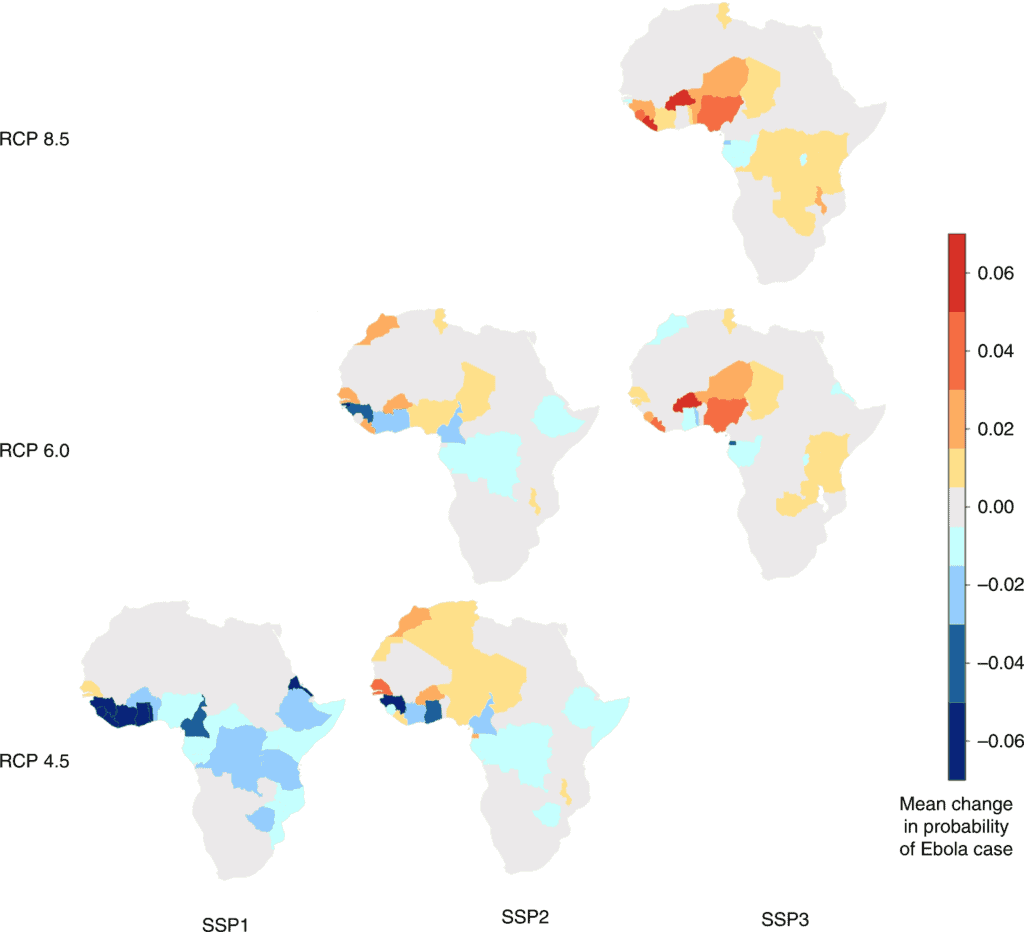
“Little is known about how the majority of human infectious diseases will be affected by predicted future global environmental changes,” the researchers start off in their study. This is particularly dangerous since many such diseases are poorly understood, and global health responses to them are chronically underfunded, they continue. So to address this knowledge gap, a team of researchers from University College in London developed a new predictive model for how the disease will develop by 2070.
To assess the risk of outbreaks, they used a mathematical model to analyze how climate change, land use, population growth, and poverty will factor in. They back-tested the model to check its validity and confirmed that the model was able to successfully predict past outbreaks.
Then, they “pointed” it at the future.
They found that unless action is taken to limit population growth, greenhouse gas emissions, and social inequality, the likelihood of new outbreaks will rise significantly. Poverty and climate change, in particular, are two main contributors to outbreak risk.
The problem with climate change is that it makes more environments available for disease-carrying species. In the case of Ebola, fruit bats are thought to be a reservoir of the virus — but they need a specific type of trees to survive. Climate change will make new areas available for these trees, and fruit bats will be soon to follow, potentially spreading Ebola to new areas. This risk will also be compounded by increasing populations, which will push people to new areas of previously untouched forests, home to species which can transfer the disease.
Meanwhile, having access to a strong and reliable healthcare system can make the difference between containing one Ebola case and a massive outbreak. Overall, the researchers report that in all realistic simulations, the incidence of Ebola will rise — by how much though, that’s a different question. Healthy policies to improve healthcare in the area and reduce overall global warming can help, but in the worst case scenario, the area affected by “spillovers” (transmission of Ebola from animals to humans) can rise by 15%, which brings a substantial increase in outbreak risk.
“Our future simulations suggest that, in most scenarios, given current projected patterns of global change, there will be a general, ongoing increase in Ebola incidence over time. For example, we estimate an annual increase in the maximum area impacted by the disease from 3.45 million km2 to 3.8 million km2 under the worst-case scenario by 2070, with increases in the maximum area seen under all future scenarios.”

The first Ebola outbreak was identified in 1976. Since then, there have been 23 known Ebola outbreaks. The disease is rare but extremely dangerous, with fatality rates ranging from 25% to 90%. There is no cure and no known vaccine, although there is a concentrated effort to design one.
Understanding the course of outbreaks is essential for containing efforts. While the model is not an exact prediction, the statistical predictions it makes can be extremely useful. For instance, the predictions also pointed to potential outbreaks in places such as Nigeria, which have not yet had an epidemic are don’t have the infrastructure to deal with one. Making sure that areas prone to an outbreak are prepared could save numerous lives.
Lastly, the model also predicts where the disease might spread to other parts of the world, via airlines. Western Europe and the US are prone to import some infected individuals, as is Russia, China, India, and much of Asia.
All in all, environmental and social factors are expected to produce important health effects, which raises the question: if global warming and poverty are increasing health risks, shouldn’t we treat them as health crises?
The study “Impacts of environmental and socio-economic factors on emergence and epidemic potential of Ebola in Africa” has been published in Nature Communications.


